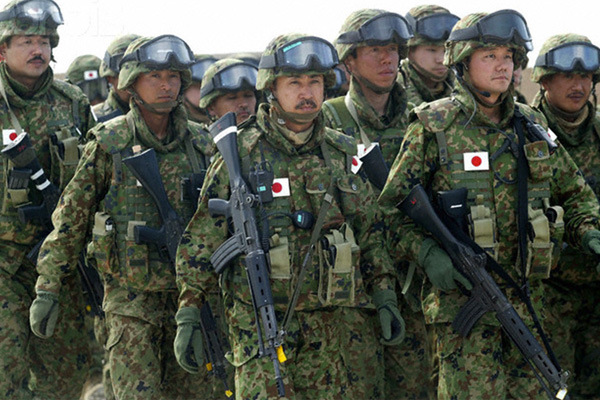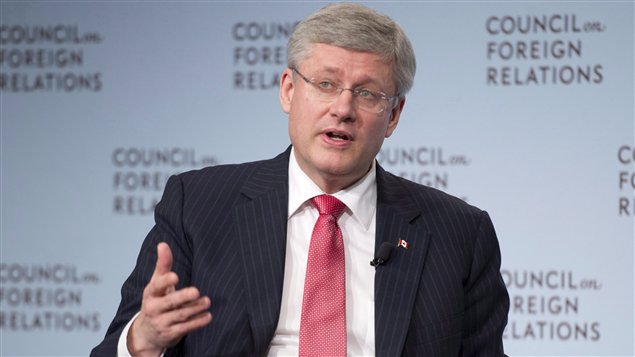On December 17, 2013 the Japanese cabinet and National Security Council approved Japan’s newest five-year defense plan, the Mid Term Defense Plan (MTDP). In this policy document, a new five-year Japanese defense build-up plan was outlined in accordance with the recently reformed National Defense Program Guidelines (NDPG). One of the policy measures that the MTDP sought to implement was the development of capabilities that would enable Japan’s Self-Defense Forces to establish maritime and air superiority. Furthermore this document called for better equipment acquisition and maintenance, measures to reform the personnel system, and finally a strengthening of the Japan- US alliance.
Interestingly, the timing of the MTDP’s release coincides with Japan’s decision to re-enter the global arms market. Such a market has been without a Japanese presence since 1970, when Japan instituted a self-imposed ban on arms exports. However, with this recent re-evaluation of its arms exports regulation by Japanese authorities, Japanese defense policymakers have hinted a return of centralized procurement procedures, which would effectively streamline the defense procurement process. Thus, based on these developments, it would appear Japan is preparing to increase its military capabilities and become a more prominent strategic player in the Asia-Pacific region.
This new goal and plan seems to be in stark contrast to previous Japanese activity in defense. Japan’s defense spending has remained relatively stagnant since 1992, and has even declined in the years between 2002 and 2012. However, with Japanese policymakers recognizing a security environment worsened by a recent deterioration in Japanese-Chinese relations, Japan has taken a 180-degree turn in its attitude towards defense procurement policy. With the recent changes outlined by the MTDP, defense spending is set to rise five percent over the next five years, reaching $247 billion USD by 2018. As part of this bolstering of defense spending Japan’s Maritime Self Defense Force (MSDF), Air Self Defense Force (ASDF) and Ground Self Defense Force (GSDF) will receive new personnel, equipment, redeployment and reorganization.

The MSDF will see an increase in submarines, from 16 to 22, with one being constructed each year. Also the number of destroyers will rise from 47 to 54, with a new escort flotilla being formed to compensate for the increase in destroyers. Japan will also purchase four new maritime patrol craft.
Japan’s ASDF will be reorganized to respond to for the increase in foreign aircraft traffic over the Sea of Japan and will receive an additional four E-767 AWACS aircraft to handle the increased demand on its squadrons. There will also be an increase in fighters with a plan to purchase 28 F-35A Joint Strike Fighters during the initial MTDP, with 14 to follow in subsequent years. Japan’s decision to increase its air superiority coincides with its decision to re-enter the arms market. Japanese defence contractors are to not construct entire weapons systems for global acquisition, but rather high-end electronic components to complement other countries’ initiatives. One of its most important projects will be the F-35 program, which is being assembled at the Mitsubishi Heavy Industries plant in Nagoya. The decision to purchase Lockheed’s F-35 will also improve joint Japan- U.S. exercises, which in turn falls in line with the MTDP guideline of strengthening the Japan-U.S. Alliance.
The strengthening of this alliance is also evident in the restructuring and procurement plans for Japan’s GSDF. Along with reorganizing the GSDF into new rapid-deployment divisions, airborne divisions and rapid-deployment brigades, there will also be a new amphibious brigade created. A plethora of equipment has been ordered to mirror that of the U.S. Marine Corp, including 52 AAV-7 amphibious vehicles and 17 V-22 Osprey aircraft, a craft designed to fit the needs of U.S. Marines specifically. The total number of GSDF personnel is set to reach 159,000 approximately by 2018.
Speculating on the purpose of the aforementioned defense procurements and structural reorganization under the MTDP, it appears Japan is attempting to fill existing defense gaps specific to its southern islands. Since 2010 Sino-Japanese relations have been worsening due to territorial claims over a group of uninhabited islands, known to the Japanese as the Senkaku and by the Chinese as Diaoyu. With China’s growing military power and contestation of Japanese sovereignty over the islands, has forced Tokyo to reconsider its security capabilities. Japan has made specific reference to China in its NDPG, stating that Japan will maintain a calm but firm stance with regard to China’s intensification of activities and expansion near Japan.

Within this same section of the NDPG plans are an outline to strengthen other regional ties with fellow Pacific nations like the Republic of Korea (ROK), Australia and Russia. Also Japan seeks to build strong relations with international community members like the European Union (EU), North Atlantic Treaty Organization (NATO) and the Organization for Security and Co-operation in Europe (OSCE).
All of this coupled with Japan’s reaffirmation of a strong U.S.-Japan alliance will potentially position Japan in a strongly allied and militarized position. In the end these actions and decisions by the Japanese government only further sets the stage for a tense five year period in the Asia-Pacific region.




